Tonle Sap Lake
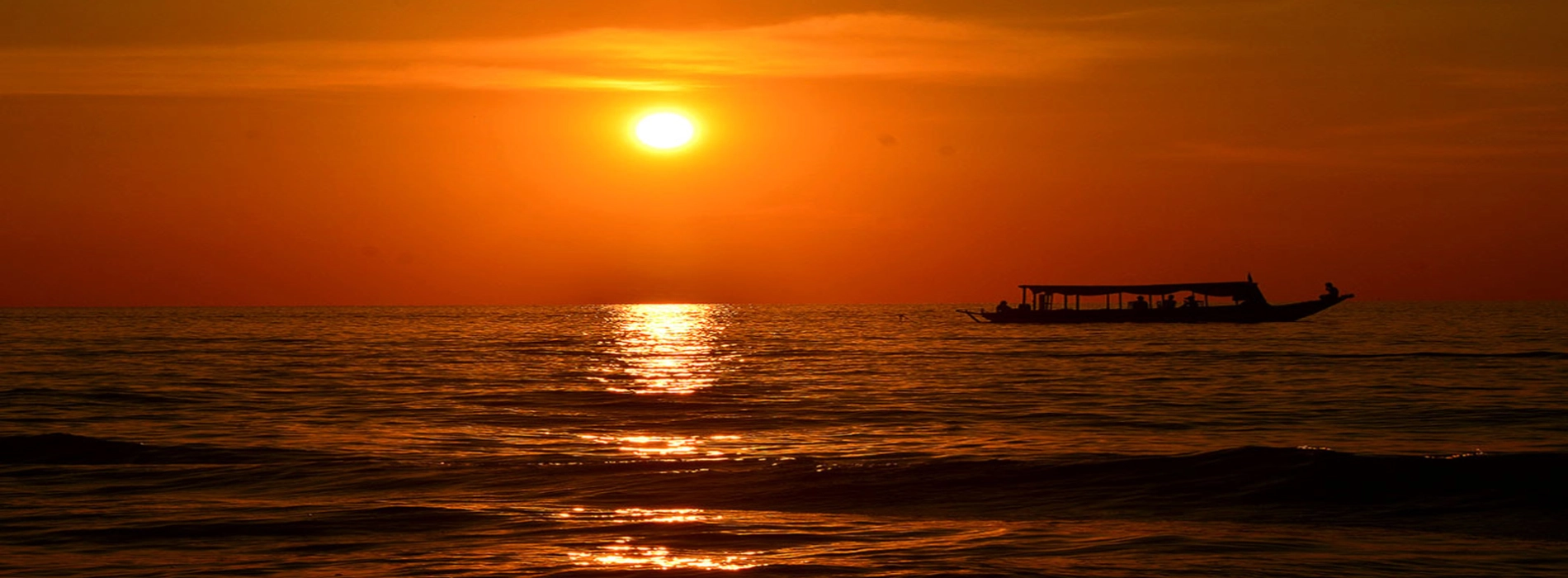
Tonle Sap, or Cambodian Lakes, is a combined system of lakes and rivers of great importance to Cambodia. The hydrological system changes flow twice a year, creating a rich and diverse ecosystem.
The floating villages on Tonle Sap Lake, where residents live entirely in beautiful houses, close together, schools, churches, temples... are a unique feature that attracts many tourists.
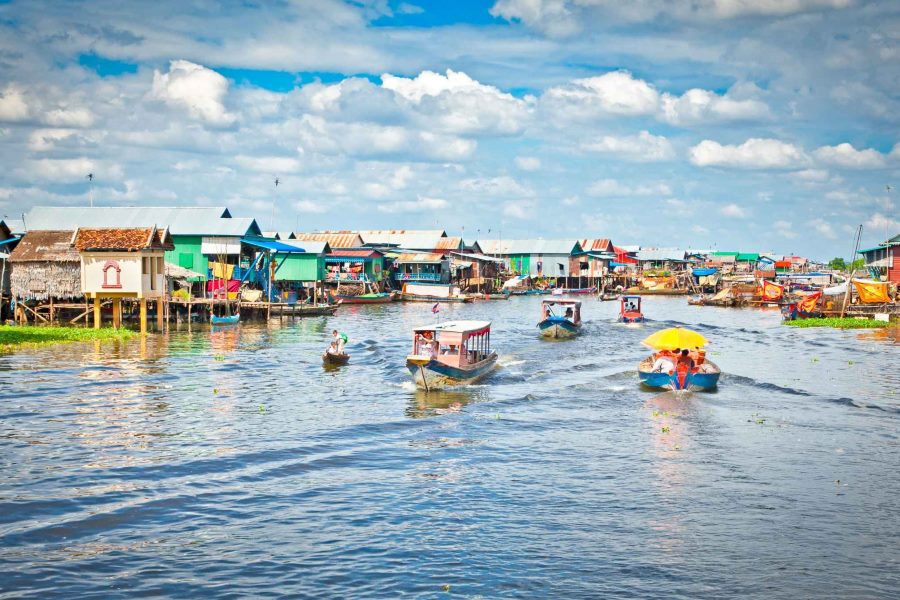
Tonle Sap is a combined system of lakes and rivers of great importance to Cambodia (Cre: get your guide)
Tonle Sap Lake is an integral part of the Cambodian people. The lake has a history dating back to around 5,500 BC, created by the development of early Indian and Asian settlements.
In 1997, UNESCO recognized Tonle Sap Lake as a World Biosphere Reserve. It plays a crucial role in regulating water levels in the lower Mekong River.
Today, new strategies and facilities are being established. However, overfishing, pollution, and habitat degradation are major problems for Tonle Sap Lake. Nevertheless, protected areas and innovative community projects are working to preserve the lake's resources, acknowledging its vital role in supporting local livelihoods and global biodiversity.
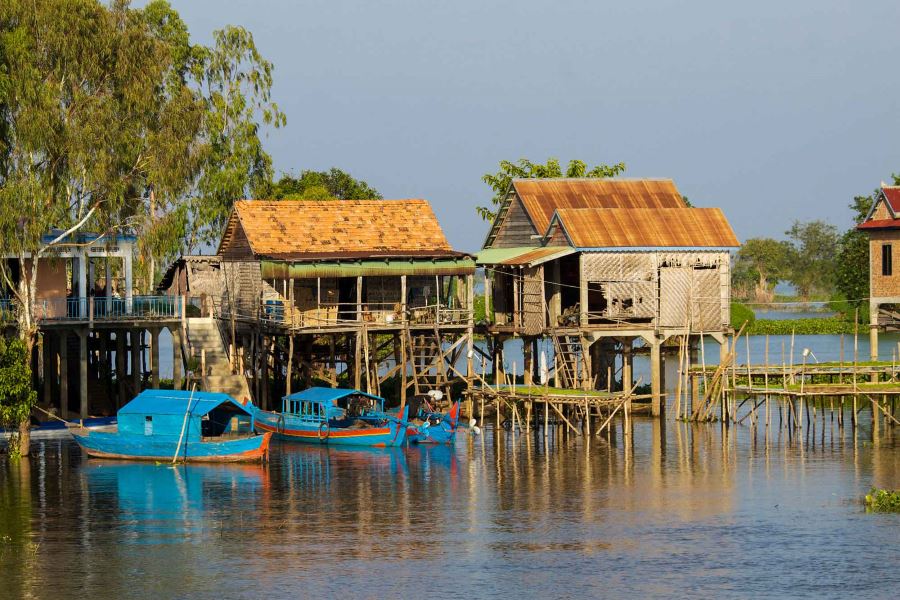
Tonle Sap Lake is an integral part of the Cambodian people (Cre: Cambodia Roads)
The distance from Tonle Sap to Siem Reap city center is 25 km, so it takes about 30 minutes to travel by car. In addition, visitors can travel from Siem Reap to Phnom Penh by speed boat across the lake and dock at Chong Khneas village. However, the limitation is that during the dry season, boats often get stuck in low-water areas.
It is considered an attractive floating water ecotourism destination in Siem Reap province and attracts many tourists every year.
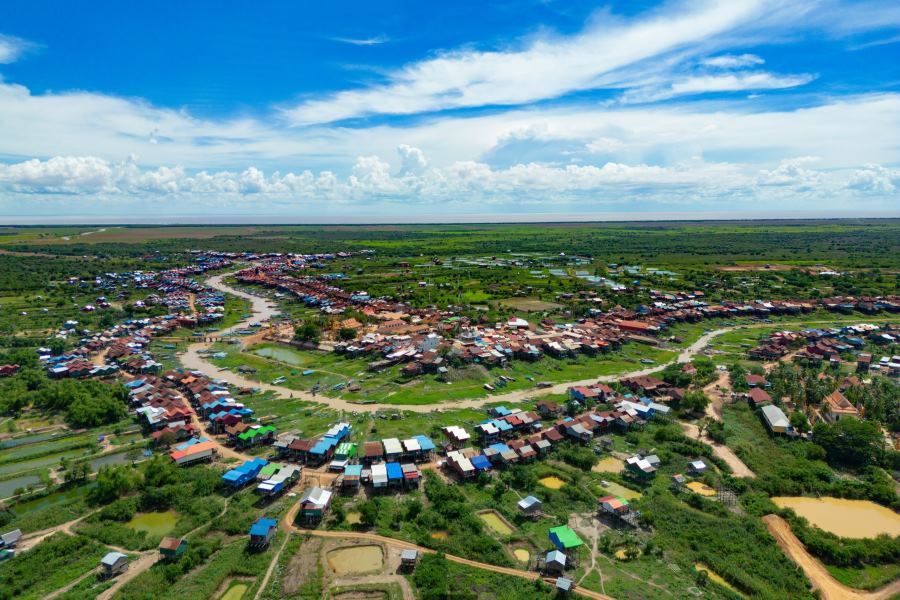
The distance from Tonle Sap to Siem Reap city center is 25 kilometers (Cre: roma.lim)
Read more: Cambodia excursions
Tonle Sap Lake is vast, and its shape changes depending on the season: the dry season and the rainy season. Tonle Sap Lake is a vast body of water whose shape varies with the seasons (rainy and dry). The lake covers 10,000 hectares during the dry season, from November to May, with the water level being quite low at around one meter deep.
When the rainy season begins in June, the Tonle Sap changes direction, causing the lake to expand to about 16,000 hectares with an average depth of 9 meters. The large size of Tonle Sap Lake makes it a great habitat for many types of fish and wildlife.
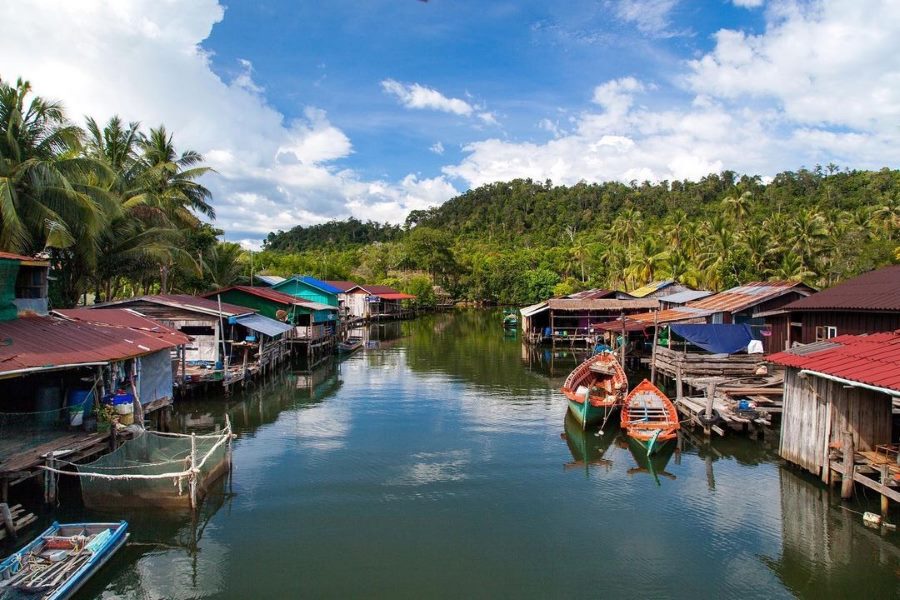
The large size of Tonle Sap Lake makes it a great habitat for many types of fish and wildlife (Cre: visitsoutheastasiaofficial)
Scenic boat tour
Taking a boat ride to enjoy the scenery on Tonle Sap Lake in Cambodia is a must-do activity. It’s also a popular service among tourists. Visitors can see the calm surface of the lake and observe the daily lives of local people. A tour around the lake can also take guests to floating restaurants, where they can enjoy delicious local food.
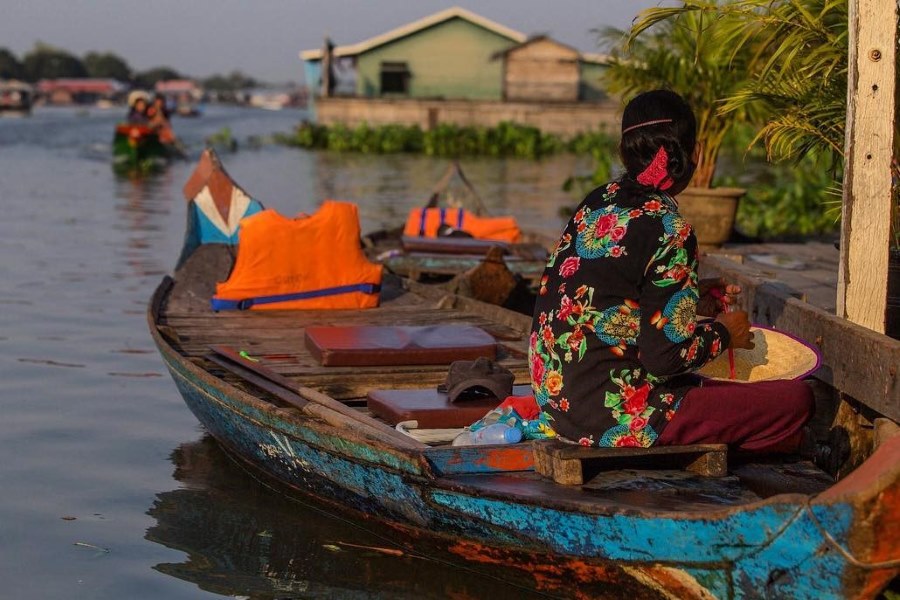
Taking a boat ride to enjoy the scenery on Tonle Sap Lake in Cambodia is a must-do activity (Cre: blueyeshut)
Explore the local fishing scenes
Tonle Sap Lake in Cambodia is home to many freshwater fish. The local people make their living by fishing with simple tools. It’s said that the fish caught here could feed 3 million people. Additionally, it provides 75% of the freshwater fish and 60% of the protein for the people of Cambodia. By observing the local fishing practices, you can also understand the rhythm of life in this area.
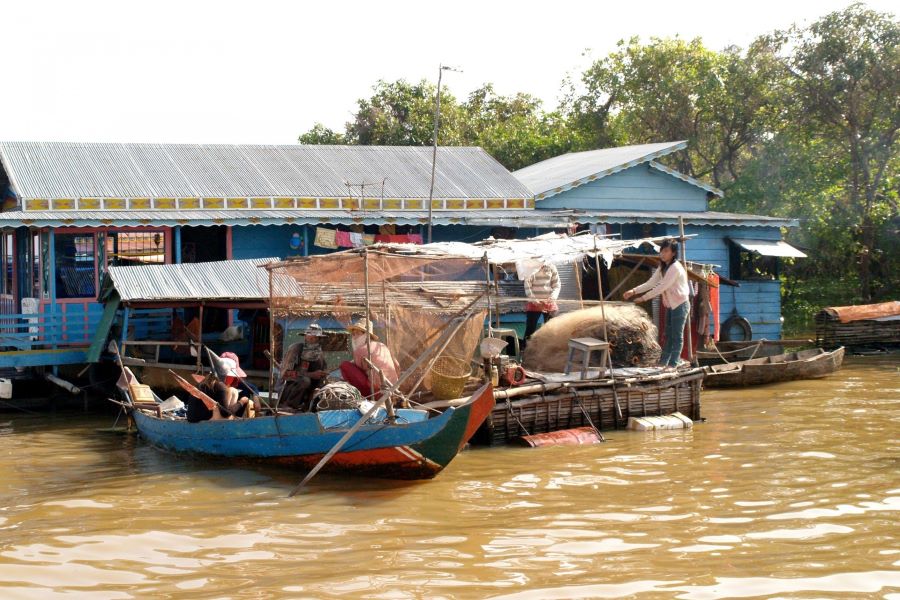
Tonle Sap Lake in Cambodia is home to many freshwater fish (Cre: publicdomainpictures)
Visit the Prek Toal Bird Sanctuary
If you have a passion for wildlife, you should visit Prek Toal Bird Sanctuary. Located in the northwest of Cambodia's Tonle Sap Lake, this area is home to many endangered bird species such as gray-headed eagles, milky white storks and gray-legged pelicans.
The sanctuary has an observation tower where visitors can take in breathtaking views of the area. The entry fee is $25 per person, but if you purchase three or more tickets, the price decreases to $20 per person (prices are subject to change).
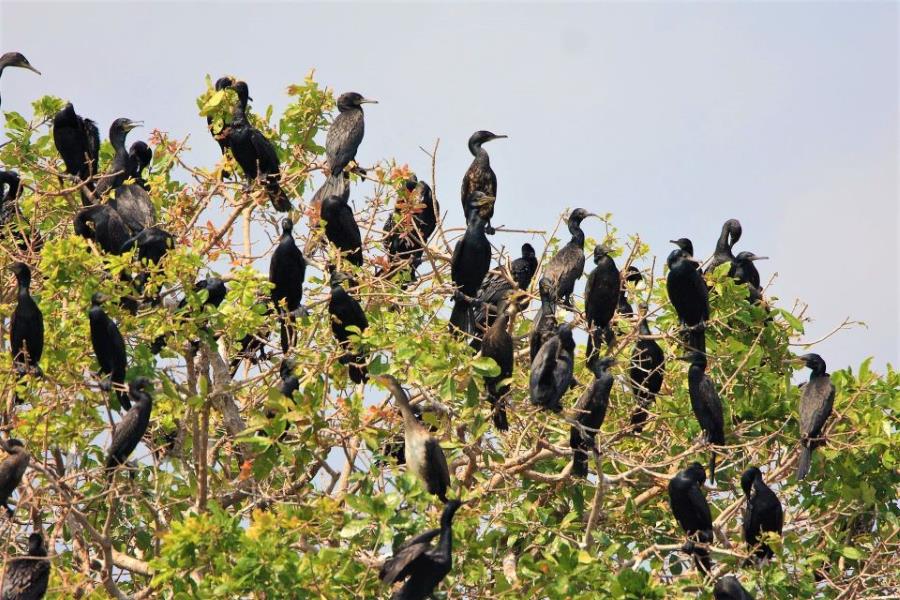
Northwest of Cambodia's Tonle Sap Lake, Prek Toal Bird Sanctuary is home to many bird species (Cre: getyourguide)
Visitors are particularly drawn to the peaceful floating villages of Tonle Sap Lake. These villages have pagodas, schools and churches, and are known for their ancient, closely knit houses. Notable floating villages include Chong Khneas, Kampong Phluk, Kampong Khleang and Prek Toal.
Enjoy delicious dishes at floating restaurants on and around Tonle Sap Lake while you are there. Don't pass up the opportunity to sample the famed river fish from the area in addition to regional Cambodian cuisine.
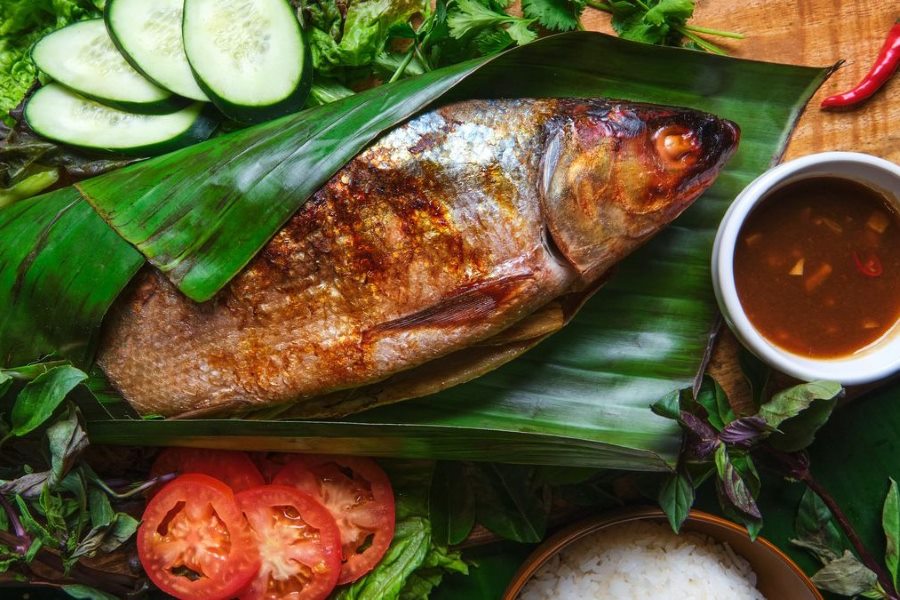
Enjoy delicious dishes at floating restaurants on and around Tonle Sap Lake (Cre: Eater)
Accommodation: Local homestay services allow visitors to stay in the homes of local people. This is a great opportunity to experience the peaceful river life, immerse yourself in the local way of life, and escape the hustle and bustle of everyday life.
You should spend at least one day exploring the lake and discovering the local way of life. If possible, stay overnight to have a unique experience at a homestay and enjoy life on the water.
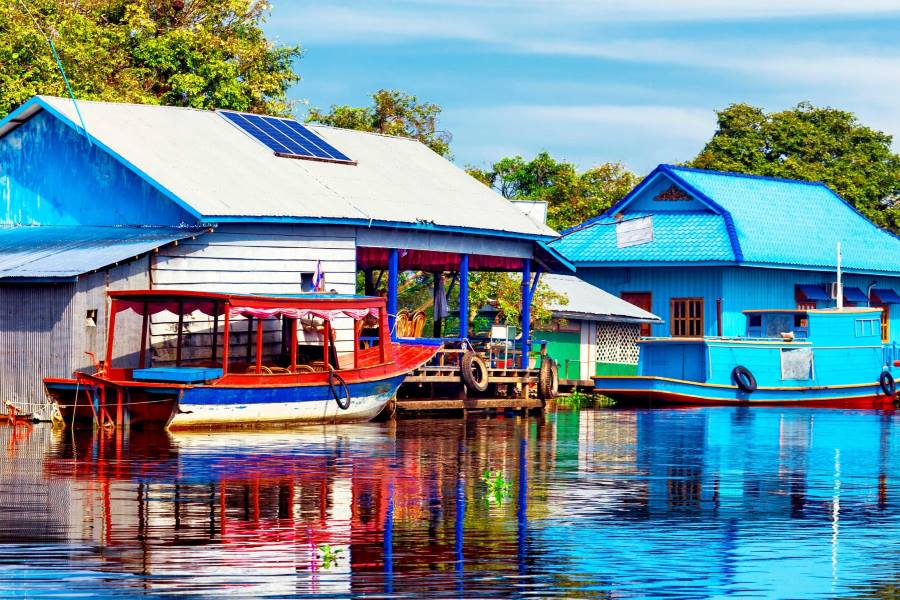
Local homestay services allow visitors to stay in the homes of local people (Cre: pelago)
Hopefully, this information about Tonle Sap Lake will help you better appreciate the beauty of Cambodia’s 'heart.' Visiting the lake will provide you with a deeper understanding of the people living on the water and the unique lifestyle of the floating villages. Begin planning your trip to Tonle Sap Lake and Cambodia today.
Read more: Cambodia tours 5 days